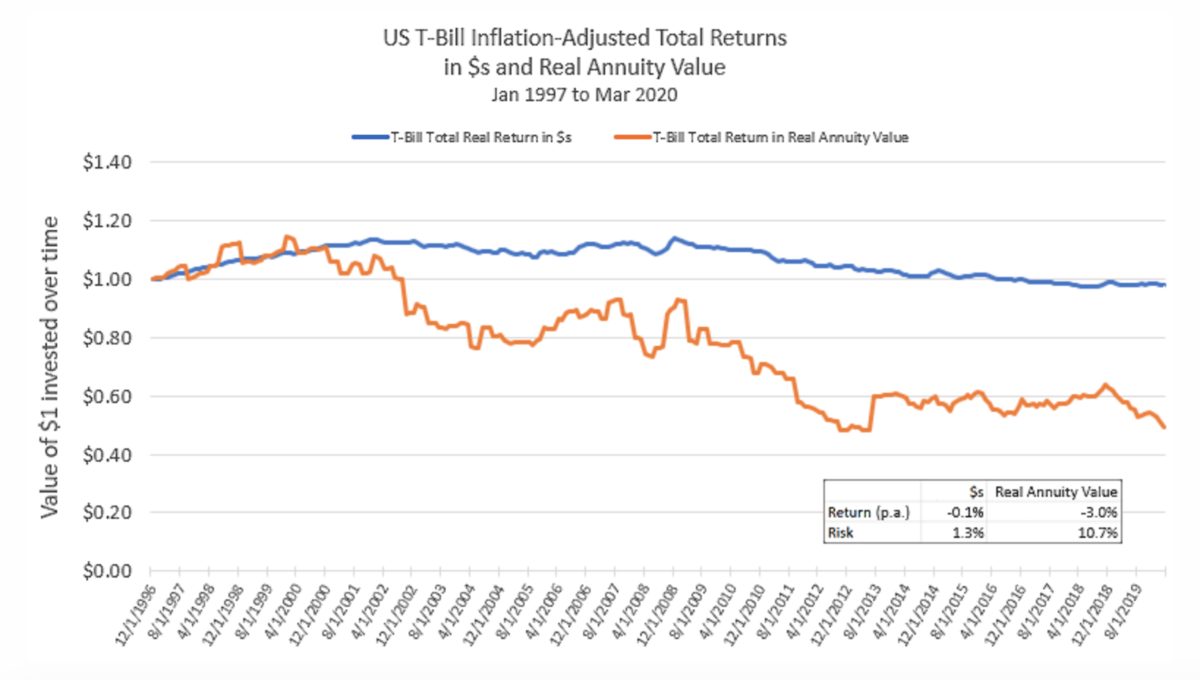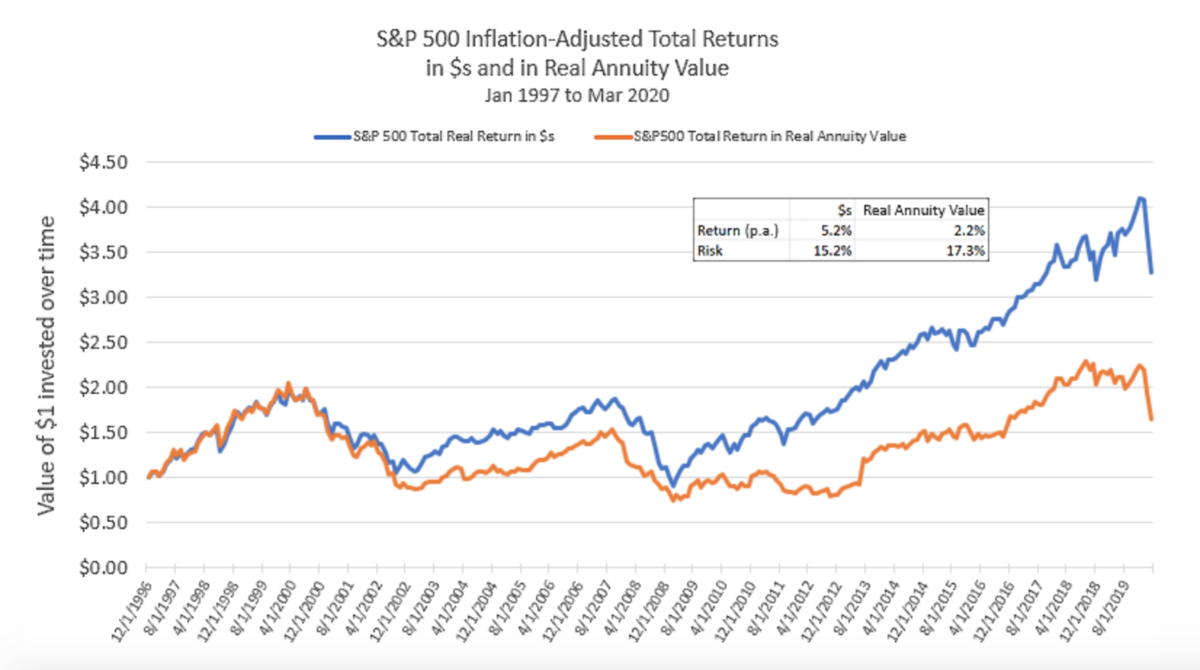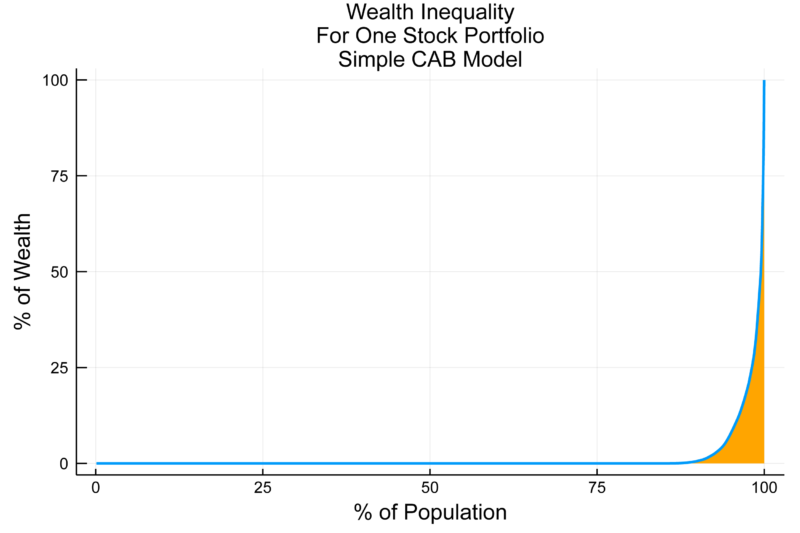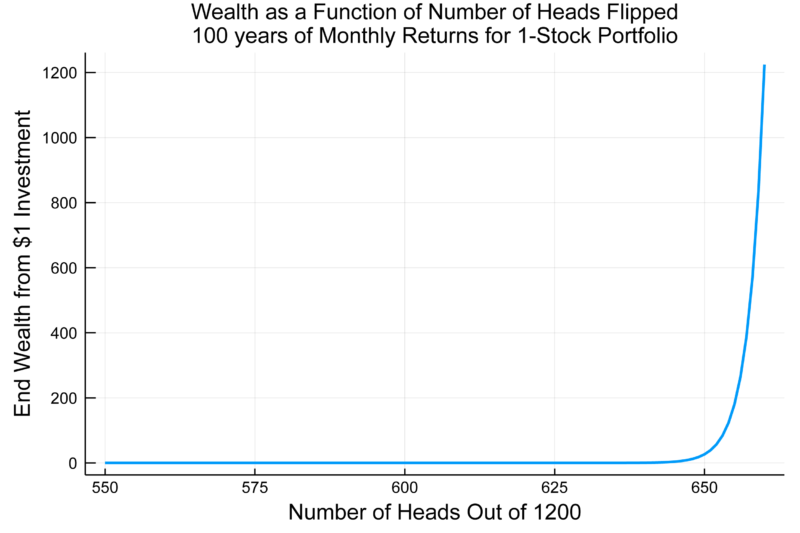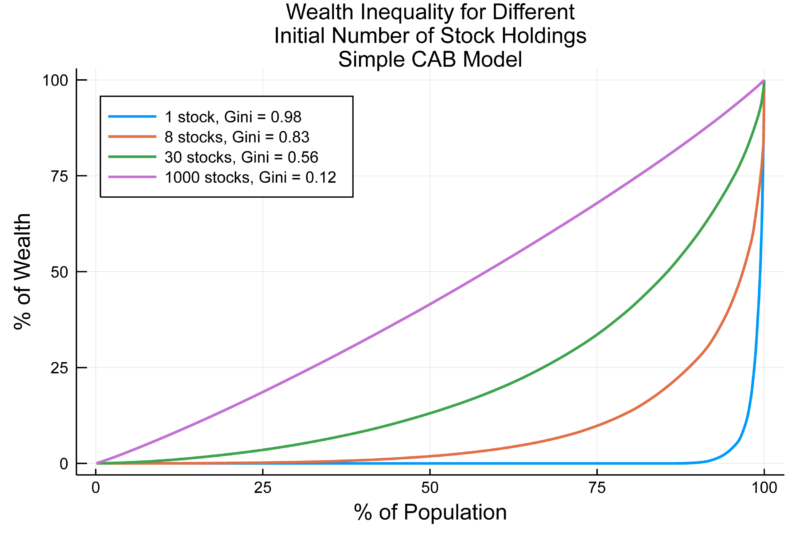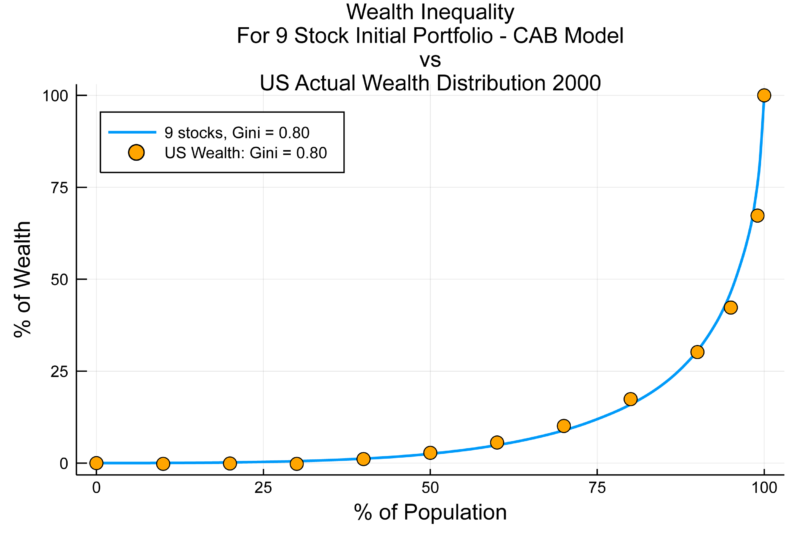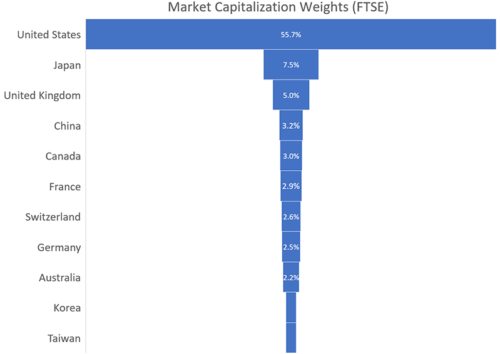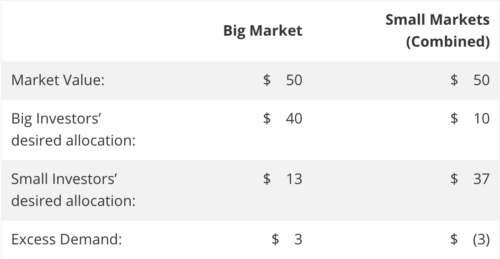The cost of anticipating corrections
Comments Off on The cost of anticipating corrections
By LARRY SWEDROE
The sharp rally in the S&P 500 Index from the March 23, 2020, close of 2,237 to the close on April 20 of 2,823 has led to my being asked about whether it’s now a good time to wait for a “correction” (implying the market is mispriced and is in need of correcting). My own personal view (on which I never rely to make investment decisions because I know I cannot forecast any better than the market) is that I’m surprised that the S&P 500 is down only about 12% when earnings are forecast to fall by much more than that.
Most of the forecasts I’m hearing from leading economists are in the area of 20%. And the error rate around that forecast is now much higher than before the crisis. I also note that such forecasts are notoriously optimistic. For example, the study Why So Much Error in Analysts’ Earnings Forecasts? found that the average consensus growth rate forecast was more than twice the actual rate. That said, should you wait for that correction? Let’s turn to the historical evidence so we can make an informed decision.
We have data for 94 calendar years (or 1,128 months) of U.S. investment returns over the period 1927 through March 2020. The average monthly return to the S&P 500 was 0.94%, and the average quarterly return was 2.9%.
Take this quiz
With that background, here’s a short, four-question quiz:
1. If we remove the returns from the best 94 months (an average of just one month a year and 8.3% of the entire period), what is the average return of the remaining 1,034 months?
2. What is the average return of those best-performing 94 months?
3. If we remove the returns of the best-performing 94 quarters (an average of one quarter a year and 25% of the entire time period), what is the average return of the remaining 282 quarters?
4. What is the average return of those best-performing 94 quarters?
What many investors don’t know is that most stock returns come in very short and unpredictable bursts, which is why Charles Ellis offered this advice in his outstanding book Investment Policy: “Investors would do well to learn from deer hunters and fishermen who know the importance of ‘being there’ and using patient persistence — so they are there when opportunity knocks.”
What Does Warren Buffett say?
It also is likely why, in his 1991 annual report to shareholders, legendary investor Warren Buffett told investors, “We continue to make more money when snoring than when active” and “Our stay-put behaviour reflects our view that the stock market serves as a relocation centre at which money is moved from the active to the patient.” Later, in his 1996 annual report, Buffett added: “Inactivity strikes us as intelligent behaviour.”
The answers to the quiz
1. While the average month returned 0.94%, if we eliminate the best-performing 94 months, the remaining 1,034 months provided an average return of virtually zero (0.1%). In other words, 8.3% of the months provided almost 100% of the returns.
2. The best-performing 94 months, an average of just one month a year, earned an average return of 10.4%.
3. While the average quarter returned 2.9%, if we eliminate the best-performing 94 quarters, the remaining 282 quarters (three-fourths of the time period) actually lost money, providing an average return of -0.8%. In other words, just 25% of the period provided more than 100% of the returns.
4. The best-performing 94 quarters, an average of just one quarter a year, earned an average return of 14.1%.
Despite this type of evidence, which makes clear how difficult market timing must be, one of the most popular beliefs held by individual investors is that timing stock markets is the winning strategy. After all, who doesn’t want to buy low, right at the end of a bear market, and sell high, just before the next bear market begins? Unfortunately, an idea is not responsible for the people who believe in it.
Pros are bad at prediction
The evidence is very clear that professional mutual fund managers cannot predict the stock market. For example, in his famous book A Random Walk down Wall Street, Burton Malkiel cited a Goldman Sachs study that examined mutual funds’ cash holdings for the period 1970 through 1989. In their efforts to time the market, fund managers raise cash holdings when they believe the market will decline and lower cash holdings when they become bullish. The study found that, over the period it examined, mutual fund managers miscalled all nine major turning points.
Legendary investor Peter Lynch offered yet another example. He pointed out that an investor who followed a passive investment strategy and stayed fully invested in the S&P 500 over the 40-year period beginning 1954 would have achieved an 11.4% rate of return.
If that investor missed just the best 10 months (2% of them), his return fell 27%, to 8.3%. If the investor missed the best 20 months (or 4% of them), his return dropped 54%, to 6.1%. Finally, if the investor missed the best 40 months (or just 8% of them), his return declined 76%, all the way to 2.7%.
In a September 1995 interview with Worth magazine, Lynch put it this way: “Far more money has been lost by investors in preparing for corrections, or anticipating corrections, than has been lost in the corrections themselves.”
Investors should keep the preceding evidence in mind — as well as advice against trying to time the market offered by investment legends such as Ellis, Buffett and Lynch — whenever they hear warnings from “gurus” that the market is overvalued and more of a correction is surely coming.
The cost of waiting
Elm Partners provided some valuable insight into the question of whether investors should wait to buy equities because they believe valuations are too high. Looking back at 115 years of data, Elm asked: “During times when the market has been ‘expensive,’ what has been the average cost or benefit of waiting for a correction of 10% from the starting price level, rather than investing right away?” It defined “expensive” as the occasions when the stock market had a CAPE ratio more than one standard deviation above its historical average.
Elm noted that while the CAPE ratio for the U.S. market is currently hovering around two standard deviations above average, there aren’t enough equivalent periods in the historical record to construct a statistically significant data analysis. It then focused on a comparison over a three-year period, a length of time beyond which they felt an investor was unlikely to wait for the hoped-for correction. Following are its key findings:
— From a given “expensive” starting point, there was a 56% probability that the market had a 10% correction within three years, waiting for which would result in about a 10% return benefit versus having invested right away.
— In the 44% of cases where the correction doesn’t happen, there’s an average opportunity cost of about 30%—much greater than the average benefit.
— Putting these together, the mean expected cost of choosing to wait for a correction was about 8% versus investing right away.
The key takeaway
The key takeaway is this: Even if you believe the probability of a correction is high, it’s far from certain. And when the correction doesn’t happen, the expected opportunity cost of having waited is much greater than the expected benefit.
Elm offered the following explanations for why it thought the perception exists among investors that waiting for a correction is a good strategy:
“First, while a correction occurring is indeed more likely than not, investors may confuse the chance of a correction from peak-to-trough with the lower chance of a correction from a fixed price level. For example, the historical probability of a 10% correction happening any time during a 3-year window is 88%, significantly higher than the 56% occurrence of that correction from the market level at the start of the period.
“Second, the cost of waiting and not achieving the correction is a ‘hidden’ opportunity cost, and we humans have a well-documented bias to underweight opportunity costs relative to realised costs.
“Finally, investors may believe they can wait indefinitely for the correction to happen, but in practice few investors have that sort of staying power.”
Elm repeated its analysis with correction ranges from 1% to 10%, time horizons of one year and five years, and an alternate definition for what makes the market look “expensive” (specifically, waiting for a correction from times when the market was at an all-time high at the start of the period).
The firm found that “across all scenarios there has been a material cost for waiting. The longer the horizon that you’d have been willing to wait for the correction to occur … the higher the average cost.”
Summary
More money is lost anticipating corrections than in them.
As the author Peter Bernstein once said, “even the most brilliant of mathematical geniuses will never be able to tell us what the future holds. In the end, what matters is the quality of our decisions in the face of uncertainty.”
We certainly live in uncertain times. But that’s always the case. To help stay disciplined, it’s important to keep in mind that the market already reflects whatever concerns you may have.
Finally, remember this further advice from Warren Buffett: “The most important quality for an investor is temperament, not intellect.” The inability to control one’s emotions in the face of uncertainty, and clarion cries of overvaluation, help explain why so few investors earn market rates of return and thus fail to achieve their objectives.
LARRY SWEDROE is Chief Research Officer at Buckingham Strategic Wealth and the author of numerous books on investing.
Want to read more of Larry’s insights? Here are his most recent articles published on TEBI:
Markets are more efficient than you think
More proof that consultants can’t pick winning funds
Active fund performance in the COVID crisis
Hedge fund fees are much worse than you thought
Index funds 43 College endowments 0
Are covered calls too good to be true?
Good financial advice is worth paying for
Did you know that TEBI can now put readers in touch with an evidence-based financial adviser in their area?
If you’re looking for advice on your investments or on your financial situation in general, simply click on this link and enter your name and email address. You will then be sent a short questionnaire to complete. Your answers will enable us to identify a suitable firm for you to speak to.
We will only recommend advisers who share our evidence-based investment philosophy and who we know and trust. If we can’t help you we will tell you.
© The Evidence-Based Investor
